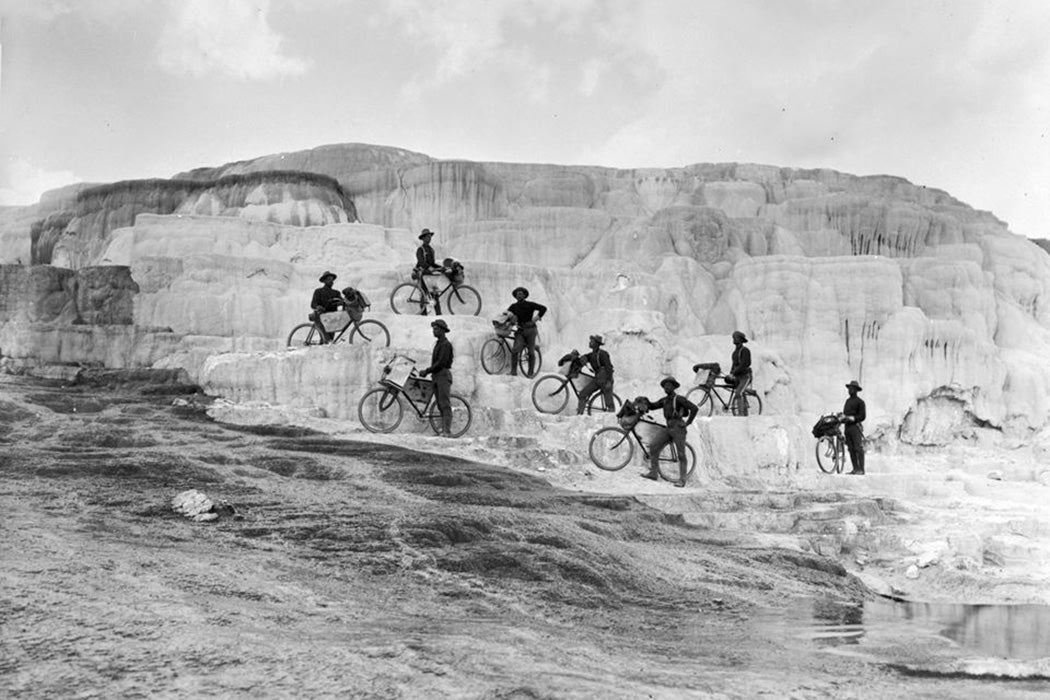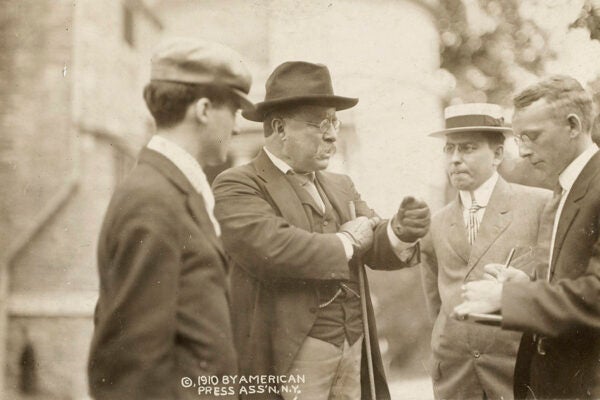In the summer of 1897, twenty soldiers of the 25th Infantry Regiment bicycled 1,900 miles from Missoula, Montana, to St. Louis, Missouri. The 25th was one of a handful of segregated Black regiments in the U.S. Army, whose members became known as the Buffalo Soldiers. They were accompanied by three white men: their commanding officer, Lieutenant James Moss; an Army surgeon; and a Daily Missoulian reporter.
Moss had proposed the trip as a demonstration of bicycle technology. He wanted to measure the efficiency of the bicycle in comparison with other means of transportation. The automobile was still two decades away from mass production, and bicycles were all the rage. European military interest in the two-wheeled vehicle intrigued at least some in the U.S. Army. Could the bicycle replace the horse and mule? Although largely unheralded, bicycle infantry were in fact used by numerous militaries during many conflicts of the twentieth century, including both world wars.
Scholar Alexandra V. Koelle explores the curious case of bicycle infantry corps heading eastwards from the frontier into the heart of a white-supremacist nation.
In the late nineteenth century, Black soldiers were purposely kept at the margins: it was policy to not station them in eastern states, particularly in the South, for fear of violence from local whites. The 25th served in Texas, Oklahoma, and Dakota Territory before serving in several forts in Montana. They fought in the Indian Wars and “continued to put down Native ‘rebellions’ throughout their decade in Missoula.” Another of their tasks was to break mining strikes.
“Black soldiers in the West were also engaged in nation-building of a different sort. By physically building the infrastructure that materially connected the West to the eastern states, such as roads and telegraph lines, and by forcefully putting down labor rebellions, African American soldiers shaped the former territories into states.”
Koelle notes that white soldiers were not required to do the physical construction that the 25th was. Uniforms did not shield the Buffalo Soldiers from racism. One of 25th’s members was lynched in Sturgis, South Dakota in 1885. Another was lynched in Fort Shaw, Montana, in 1888, after the commanding officer of the regiment gave the white mob access to the victim. On the frontier, they were grudgingly tolerated under the assumption that they would eventually be stationed elsewhere. The exception was when they suppressed a strike. Then the mine-owners feted them.
So the soldiers were a familiar sight in the West, but not further east. “Notice of the bicycle corps troops’ arrival in three Montana towns made no mention of their race,” writes Koelle, but the further east they pedaled, the more the racial commentary increased, and the “stricter the segregation.” In Missouri, for instance, a farmer refused them space for camping after asking if they were “Union soldiers”—three decades after the defeat of slavery in the Civil War.
No documentation by the soldiers themselves has been found. Koelle pieced together her history from military reports and newspaper articles. Lieutenant Moss, a Southerner who graduated at the bottom of his class at West Point, often characterized the men under his command with the racist stereotypes of the day.
Moss did, however, propose another cycling sortie, this time from Missoula to San Francisco, with the stated aim of exposing more white Americans to the reality of Black American soldiers. This never happened. The 25th was sent into combat in Cuba in the summer of 1898.
Weekly Newsletter
After the Spanish-American War, the regiment was stationed in Texas. During the “Brownsville affair” of 1906, 167 members of the regiment were dishonorably discharged without trial after local whites claimed soldiers killed a bartender and wounded a police officer. In 1972, after a new investigation, the men were found innocent, pardoned, and honorably discharged—by then, only two were still alive.
The highest ranking soldier expelled in 1906 was First Sergeant Mingo Sanders, who had fought in Cuba and, before that, participated in the cross-country bicycle mission. Koelle concludes that in “biking through Indian reservations, national parks, and battlefields, and to St. Louis, [the men of the 25th] embodied the contradictions in the national rhetoric of freedom through westward mobility.”
Support JSTOR Daily! Join our new membership program on Patreon today.







